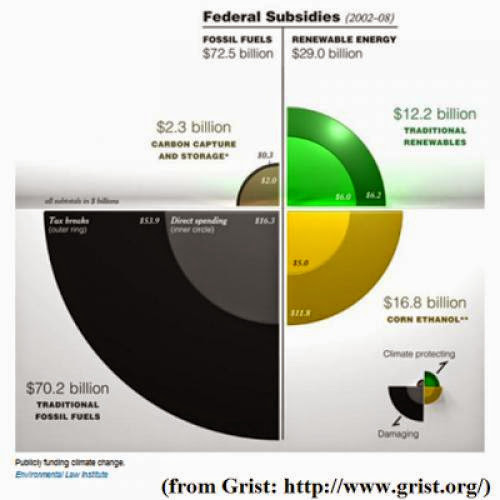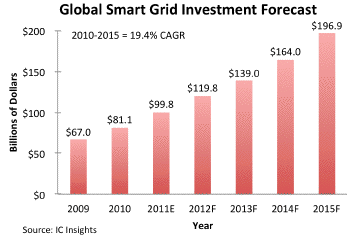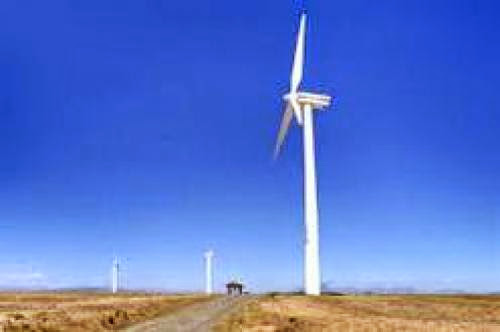
"This is a longer version of the piece in yesterday's Guardian website. That piece however has the web links in it - sorry, lack of time."
(c) David Thorpe
The beautiful resort of Nusa Dua, Bali, is ths week the scene of a battle of world-wide significance. Yes, it's yet another UN climate conference.
We're all used by now to how these things involve the spouting of giga-tonnes of hot air which fail to turn many turbines that might result in effective action on global warming. This one promises to be only slightly different. The IPCC report issued two weeks ago was the last warning salvo fired by the scientific community at heads of government before the talks, and its most extreme warning yet, although by its very nature (the peer-reviewing and debate) it is two to three years behind the latest monitored climatic effects, showing change is happening even faster than previously thought.
UN Secretary-General Ban Ki-moon who will host the talks, has singled out the United States and China, the world's top two emitters of greenhouse gases, which have no binding goals for curbs, as key countries in the process. A main opponent to the UN process has been removed in Australia following the election of Labour's Kevin Rudd as PM, and of his appointment of a former protest rock singer as Minister for the Environment and a Malaysian-born woman as Minister for Climate Change and Water, who will both work to ratify the Kyoto Protocol.
But no one expects any big breakthroughs. In the 'Washington Declaration' agreed on February 16 this year, leaders from the developed world agreed in principle on the outline of the Kyoto Protocol's successor: a global cap-and-trade system that would apply to both industrialized nations and developing countries, hoped to be in place by 2009. The British position for Bali is to support this but to expect to wait at least a year for an agreement, and hope that Bush's successor will be more onboard. If, after November 4 next year, it's Hillary Clinton, then it's assumed she will sign up to such a package. After all, almost half of American states, and many big companies, including Google, are working to install renewables and trade carbon. Google co-founder Larry Page said on Tuesday that Google is to invest millons to make green electricity cost less than coal in "years not decades."
Away from the sun-kissed beaches of Indonesia, the action that's more of relevance to us in Britain is happening closer to our rain-drenched shores.
Meanwhile Back In Britain
The EU has published its assessment this week of where Europe is on the track towards its 2012 Kyoto target of reducing emissions by 8% - itself a pitiably modest target. The chart below shows the percentage each of the 26 countries and Europe as a whole is along the path. The worst achiever is at the top of the chart, Spain is leading way ahead. The UK is in the bottom half of achievers, 10th from the bottom and 16th from the top.
As a result of our poor progress, the EU says it needs to purchase emission credits from third countries and forestry activities that absorb carbon from the atmosphere and further measures. But another report this week said 20% of these credits were worthless due to double accounting.
What has been happening in Britain over the last ten years, which has caused us to fall behind our European targets on renewable energy and carbon emissions? Why has the Government seemed to say so much yet do so little? Why is the Government expecting to build more nuclear power plants, and rely on carbon capture and storage to capture the rogue gas and bury it underground or at the bottom of the sea? Why is it going to argue in Europe in the next few months that the UK must not have to reach the European target of 20% of renewable electricity by 2020? (Instead it will campaign for a grossly inefficient use of voluntary credit purchases to make up its renewables shortfall. Some say we'll be lucky to reach 10% at the rate we're going.)
The fact is that the paralysis and tardiness are the fruits of a bitter dispute at the heart of UK energy policy development. This battle sees support for new nuclear build, gas and carbon capture pitted against support for renewables, in which a feed-in law should have a rightful place. The lobbying battle has been led by the conventional energy industry giants and the nuclear industry. The UK's energy companies are mostly owned by German and French utilities (such as E-ON, RWE and EDF) - who all oppose feed-in, (some welcome the opportunity for large profits from wind farms).
These companies have successfully nobbled both BERR (the department formerly known as DTI) and the Treasury. They have not nobbled Defra, which has responsibility for climate change but not energy (that's at BERR). Defra, and many back-benchers, support a feed-in tarriff, but whenever such a question is addressed to Energy Minister Malcolm Wicks, as it has been several times this month in Parliament in debates over the Climate Change Bill, he bats it away very smartly, and talks like a robot about the Renewables Obligation, partly because the energy giants (Eurelectric et al) have mobilised a fresh campaign against feed-in tarriffs.
Pay Everyone For Generating Renewable Energy
Many and loud have been the clamours for such a tarriff over the years, from the renewables industry - e.g. the Renewable Energy Association and the BWEA - but also recently both the Conservatives and the LibDems have made it their policy. The reason for its popularity is because it works - countries which have such a tarriff have generated robust renewables industries, and it's been highly effective in increasing the amount of renewable electricity generated, combating climate change and helping countries meet EU targets.
What is the feed-in tarriff? It simply guarantees producers a fixed price for electricity generated from PVs. It was introduced in Germany in 2000, and revised in 2004 to cover the full costs involved in producing solar electricity, sparking a boom. Germany will have almost 20 times as much PV by the end of 2007 as in 2000 when there was just 44MW, according to the German Solar Industry Association. It has led to around 800,000 properties having the technology installed and 55 percent of the world's photovoltaic power is generated on solar panels set up between the Baltic Sea and the Black Forest. Just what we need here.
Instead, in the UK we have the Renewables Obligation, which is supposed to compel suppliers to purchase an increasing proportion of electricity from renewable sources. In 2006/07 the proportion is 6.7% (2.6% in Northern Ireland) and should rise to 10.4% by 2011-12, then by 1% annually for the five years following. But actually we are way behind this target. The RO has often been criticised for being ineffective, bureaucratic, slow, and in particular excluding small generators such as householders.
Which is just how the large energy producers like it - they don't want a lot of microgeneration schemes all over the country. Good grief, if everyone is making their own electricity, who is going to buy from them? They'll have to buy the amps you don't want! And the unions agree. It's worth noting that the unions are well represented in the conventional energy industry, with coal and nuclear carrying significant union membership. But the UK renewables industry has no union. Conversely, the big energy companies are all members of the only lobbying bodies the renewables industry has, their trade associations.
There have been any number of well-researched reports showing how Britain can meet and exceed its climate targets, from Zero Carbon Britain to this week's Home Truths report from Oxford University. But instead the Government will be resurrecting civil nuclear power - just as seven of the UK's 16 nuclear power plants are currently off-line for repairs and maintenance. (And they say wind power is intermittent.)
Nuclear Power Is Not Low Carbon
The comeback of nuclear power is based on the allegation that it is almost carbon-free. The Treasury has accepted evidence that its lifecycle carbon emissions are equivalent to wind power's: between seven and 22g CO2/kWh. However, extensively peer-reviewed and checked empirical analysis of the energy intensity and carbon emissions at each stage of the nuclear cycle (at http://www.stormsmith.nl/feed) has produced much higher figures. In fact, nuclear power produces roughly one quarter to one third as much carbon dioxide as the delivery of the same quantity of electricity from natural gas, i.e., 88-134g CO2/kWh. Gas-fired electricity production involves the emission of around 450g CO2/kWh. Nuclear is still lower than gas, but nowhere near wind.
However, don't expect the Government to listen to this. It has already decided, in a mind-bogglingly cavalier fashion, in advance of the announcement of the result of its consultation on nuclear power next month, that it is fine and dandy to proceed with new power stations. Even when they are so close to the sea that they are in danger in the future of flood-damage from rising sea levels; even though the fuel is free for all renewable energy, and freely delivered on site; even though, unlike nuclear power, there is no carbon-intensive supply chain; and even though the site of a wind turbine can be cleared very quickly when the turbine is decommissioned leaving no residue to take care of for tens of thousands of years.
Why? Because its policy is that the present government will not have to foot the bill for these power stations - unlike renewables, which involve some taxpayers' money. Of course taxpayers will pay, but in a roundabout way. They will pay for the clean-up. The current clean-up bill for existing nuclear waste clear up is lb73 billion (says the Nuclear Decommissioning Authority).
Is lb73 billion a bargain? I challenge anyone to say that it is. But this is: Oxford University's Environmental Change Institute report, Home Truths, says that Government spending of lb12.9 billion a year for approximately ten years would give us 80% cuts in carbon emissions, the elimination of fuel poverty, and permanent energy savings from UK homes worth lb12.3 billion a year. That's a net cost of just lb6 billion, with many more jobs created that nuclear power would yield. The average household would see their energy bills cut by at least 66%, equivalent to a lb425 annual saving at today's prices. To put this in perspective, a year ago it was reported that the cost of the Iraq war (designed to secure energy supplies) to the British taxpayer thus far had been lb7 billion.
So in the Government's armoury of policies against climate change we have discredited the Renewables Obligation, and established that carbon credits are unreliable. What's left? The EU's Emissions Trading System, and carbon capture and storage.
The Great Emissions Credits Giveaway
The energy companies have persuaded the Government to persuade Europe to create in the second round of the ETS, a new set of certificates to pretend to save carbon but make them money. For each kWh of green electricity produced, the producer can ask a competent national body to issue a green certificate. This can be traded and will be counted towards the national target in the country into which the certificate is sold - a developing country, most likely. The country from which the certificate originates will not be able to count it under its own national target achievement plan. In this way, the energy cartel vigorously defends a domestic system which blocks out everyone except the biggest investors, themselves - the reverse of what a feed-in system achieves - and lobby in Europe for a system which will undermine everyone else's renewables systems.
The most spectacular success of the Emissions Trading System so far has been to generate profits for the big energy companies. No wonder they love it. A report by Open Europe, in July 2006, found that profits were lb10.2m for Esso; lb17.9m for BP; and lb20.7m for Shell. Conversely, smaller organisations like hospitals and universities, who had been given far fewer credits, were forced to go out and buy them - while the price was still high. So, for example, the University of Manchester spent lb92,500 on EUAs.
The permits to burn fossil fuels were given away to 5,000 of the EU's biggest polluters. At one point, the price of permits rose to EUR27 per tonne, making the whole distribution worth EUR177 billion. This inflated their profits and enabled them to out-compete cleaner, less energy-hungry firms. It also enabled them to finance further lobbying in the manner described above.
If, instead, the emissions permits had been given to every EU resident, we could each have been better off by up to EUR280 a year, Irish sustainable development group Feasta has calculated. Some campaigners are currently considering whether to mount a legal objection to this great giveaway, on the grounds that the energy companies operated as a cartel, and that the emissions were part of 'the commons' belonging to all EU citizens, who had effectively paid for it through their higher energy bills. Although it's a case of bolting the stable door after the horse has escaped, the point of the challenge would be to raise awareness of the rip-off and challenge the companies' hegemony.
Burying Carbon Is Not A Serious Option
As for carbon capture and storage, the big energy companies would love to count tonnes of the gas buried as qualifying for allowances under the European Emissions Trading Scheme. Yet a draft of the European Directive on the topic, published on Thursday, and due to be presented by the Commission in January, says that although it will be included in the ETS, credits won't be allowed, on the grounds that the technology is "immature".
Neither has the European Commission has decided to impose CCS technology on coal or gas-fired power plants from a specific date, for the same reason. Furthermore, "CO2 captured and stored will be credited as not emitted under the Emissions Trading Scheme," says the draft. The energy firms will be gnashing their teeth at the thought of those potential lost Euros, and therefore won't be nearly as willing to invest in the R&D.
One high-ranking Commission official close to the work recently admitted that the Commission "has perhaps been too optimistic" on CCS and that making the technology viable is going to be "more costly and more complicated" than initially thought." says Euractiv, the independent Brussels media portal. "The January package will confirm CCS as a legitimate emission-mitigation technology fully recognised under ETS", said the Commission's energy spokesperson Ferran Tarradellas. But he added that "additional incentives may be necessary to address the currently unfavourable economics of the CCS technologies". The IPCC will be saying in Bali that there are many unknowns regarding CCS, but that it certainly has potential for use at "the high economic end" of the list of mitigation techniques. Our government has meanwhile tendered for a demonstration project and is working with Norway in the North Sea on CCS projects.
So all of the policies lobbied for by the large energy companies are of dubious value in reducing carbon emissions, yet they are about to be enshrined in law in the Energy Bill, while the Climate Change Bill, although it makes many provisions, doesn't actually contain any proper policies. What policies should they contain? In my opinion, only two central policies are required, from which all other policies and implementations could follow.
The Policies We Need
The first is the feed-in law referred to above. In another development this week (it's been a very busy week for climate policy), the World Future Council and Alan Simpson MP launched PACT (Policy Action on Climate Toolkit) on 28 November at the House of Commons. The Council had commissioned research comparing the RO with the tarriff and decided that feed-in tariff (FIT) laws have proved the most effective approach for accelerating the deployment of renewables in the electricity sector, especially on a small, local basis, and boosting the industry. This toolkit is on a website - www.onlinepact.org - that aims to help users around the world to introduce or improve FIT laws in their country or region.
The second is cap-and-share (or TEQs - Tradeable Energy Quotas). They both involve taking the choice out of consumers' hands. What? I hear you say. We can't do that! But the logic is, that educating consumers to buy energy saving products is not sufficient. As long as the products are on the market - and patio heaters and digital gadgets will be - people will buy them. Especially if they've saved money by saving energy - they're bound to spend it - and all spending involves an energy quotient.
So what do you do? You allocate a cap on the amount of carbon that can be emitted in the country, and reduce it year by year. You apportion that amount to each individual and let them spend it. Two main systems of doing this are competing for adoption. Over in Ireland, cap-and-share is the successful one, and AEA Environmental Consulting has just announced that it has won the job of producing a feasibility study on its implementation over there. Cap-and-share lets individuals choose whether to destroy or sell back to energy producers their allowances. These companies (and there aren't many) can only emit the carbon thus permitted.
Under TEQs, being trialed in several communities in the UK, individuals spend their allowances whenever they purchase energy. If they outspend their quota in a year, they must buy more off those who haven't. This system engenders more consumer awareness of how their activities use energy.
Both policy solutions take power from the energy cartel - literally - not to mention their gravy train. You can see why they don't like them.


























